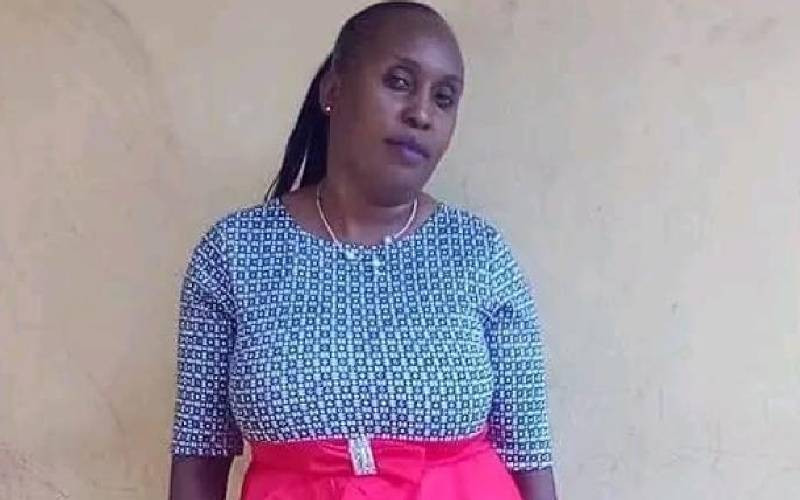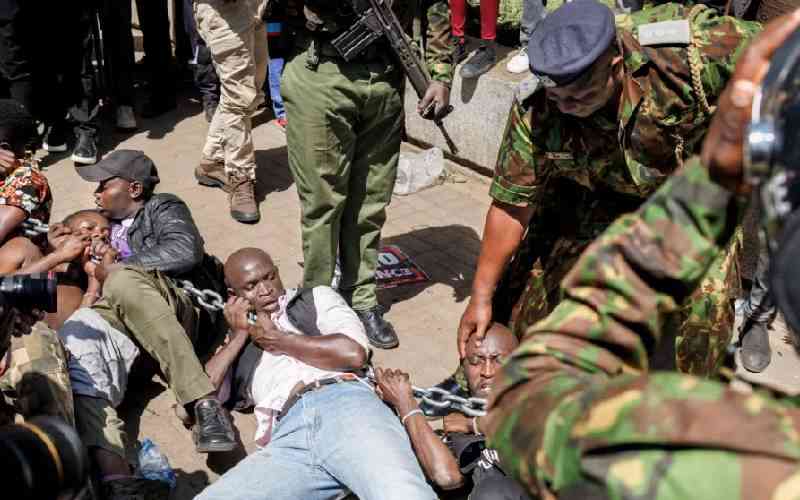They appear as enlarged, twisted veins on your legs, mostly in elderly persons and in women. And while every healthy leg has veins and valves that keep blood flowing to the heart, the odds were against this 28-year-old man when ugly bulges on his left calf enlarged daily.
And when the spider veins began to aggressively advance towards his thighs, he knew it was time to see a doctor. Mustafa Karua was nervous because he was a fitness enthusiast with a daily one-hour exercise regime.
“I initially ignored them but three months later when they became pronounced, I knew something was wrong,” says Mustafa in an interview with The Standard on Saturday.
Working as automotive engineer and most of his time spent on toes, he assumed the elaborate protrusions on his skin would be sorted out with a cream and a few pills, and released back to his job immediately. However the diagnosis was that the lumps on his legs were beyond cosmetic concerns.
Varicose veins. Sounds like a pair of harmless internal body parts, but when the elaborate medical verdict was placed on the table for Mustafa, it meant his blood was thicker than normal and thus flowed slowly causing back-flow, hence the swellings.
Battery of tests
“But I exercise daily?” he questioned. This sparked off a battery of tests at both the company clinic and later consultations at health facilities in Nairobi confirmed that he had varicose veins that should be treated urgently.
Thoracic and cardiovascular surgeon Josiah Ruturi explained the principle of blood flow where veins are meant to function optimally through one-way valves that open to let the blood through and then close to prevent it from flowing backwards.
As you grow older, Dr Ruturi noted, the elasticity in the veins is lost to the wear and tear of the valves thus the slow flow of the blood that should be moving towards the heart.
“When the blood begins collecting at certain points in the veins, a varicose vein diagnosis is given,” Dr Ruturi said.
Mustafa had not heard of the condition and with second, third and fourth opinions sought, he became aware that he was one of the young Kenyans diagnosed with varicose veins. He began associating the momentous pains in his legs in the last five months that would radiate to the entire leg to this condition.
“My first reaction was to run to Google and I realised I was dealing with a condition that could render me immobile then down terminally if it wasn’t treated early enough,” said Mustafa.
While age and being a woman increase an individual’s risk of getting varicose veins, Mustafa had none of these and it did not even run in his nuclear or extended family of this young engineer.
Damaged valves in the veins are the commonest culprits causing this condition, Dr Ruturi noted, however it can also run in families where few valves or those with abnormalities are passed on. Work-related hazards complicate the situation.
Weak valves
Stay informed. Subscribe to our newsletter
“When people with weak valves stand for long, blood flow reverses because of gravity instead of flowing forwards leading to increased pressure in the superficial veins because of this,” Dr Ruturi added.
Other risk factors include a sedentary lifestyle, injury, obesity, smoking, chronic constipation and prior surgery to the legs or pelvis.
How are these varicose veins first-sighted? On their appearance, Dr Ruturi noted that they vary from one individual to the next, but can be from mild spider-like small curves seen under the skin especially in light skinned people to open non-healing ulcers.
Dr Ruturi further warned that some occupations that require prolonged standing like shopkeepers, teachers, engineers, nurses, security officers and surgeons are at risk of developing this condition.
“More women present to us more than the males but this could also be because they wear dresses and skirts and are more conscious of these dilated veins,” he added.
In pregnant women, this condition is common because of the exerted weight and treatment regime can only be drawn three months after delivery and for others,
Taking hormone replacement therapy or birth control pills increase the risk of varicose veins in women.
Whereas treatment ranges from Sh150,000 to Sh300,000, an early diagnosis is advised in order to rule out complications that could graduate to blood clots that could travel to vital organs like the lungs and heart, known as Deep Vein Thrombosis.
Deep vein thrombosis (DVT) is a blood clot in one of the deep veins in the body which if undetected could travel into the bloodstream and block one of the blood vessels in the lungs. Dr Ruturi initially advises conservative management like changing to healthier lifestyles like managing body weight, elevate your legs whenever possible and also frequently walking.
Since his condition had aggravated in the last one year, Mustafa underwent a procedure known as radio-frequency ablation where radio-frequency energy is used to heat up and damage the wall inside a vein, closing it off. He was half awake during the one hour-long procedure that he believes has given him a second lease of life.
Mustafa is currently on compression stockings meant to improve circulation of blood by gently squeezing his legs to encourage blood to move up his legs.
“The stockings have become part of my life,” he said adding he is now tasked with explaining to the curious ones, including those he is dating.
“Sclerotherapy is another treatment option for small veins available in Kenya a chemical irritant is injected into the veins destroying them,” Dr Ruturi added.
Surgery is another option to relieve varicose veins, Dr Ruturi said, however not everyone is a candidate thus the medical team assess it on a case-by-case basis.
Majority of the cases in Kenya are treated by a method known as stripping where two cuts are made, one at the groin and one at the knee, and a tunneling device is placed under the skin.
According to Dr Ruturi, the radio-frequency ablation restores automatic blood flow because it is rerouted to nearby healthier veins, reduces swellings on the affected parts and the individual is able to resume their lifestyle within days.
By next year, Kenya hopes to bring home the biological glue as a treatment option as is currently used in South Africa because it seals the problematic vein and blood is rerouted through nearby healthy veins. Mustafa took the diagnosis as a two-way street and is now keen to create awareness on this silent condition.
“What separates me and another individual who is ignoring these spider veins is that I took control. The first step is acceptance, then diagnosis and treatment will be smoother,” he concluded.
 The Standard Group Plc is a
multi-media organization with investments in media platforms spanning newspaper
print operations, television, radio broadcasting, digital and online services. The
Standard Group is recognized as a leading multi-media house in Kenya with a key
influence in matters of national and international interest.
The Standard Group Plc is a
multi-media organization with investments in media platforms spanning newspaper
print operations, television, radio broadcasting, digital and online services. The
Standard Group is recognized as a leading multi-media house in Kenya with a key
influence in matters of national and international interest.
 The Standard Group Plc is a
multi-media organization with investments in media platforms spanning newspaper
print operations, television, radio broadcasting, digital and online services. The
Standard Group is recognized as a leading multi-media house in Kenya with a key
influence in matters of national and international interest.
The Standard Group Plc is a
multi-media organization with investments in media platforms spanning newspaper
print operations, television, radio broadcasting, digital and online services. The
Standard Group is recognized as a leading multi-media house in Kenya with a key
influence in matters of national and international interest.








